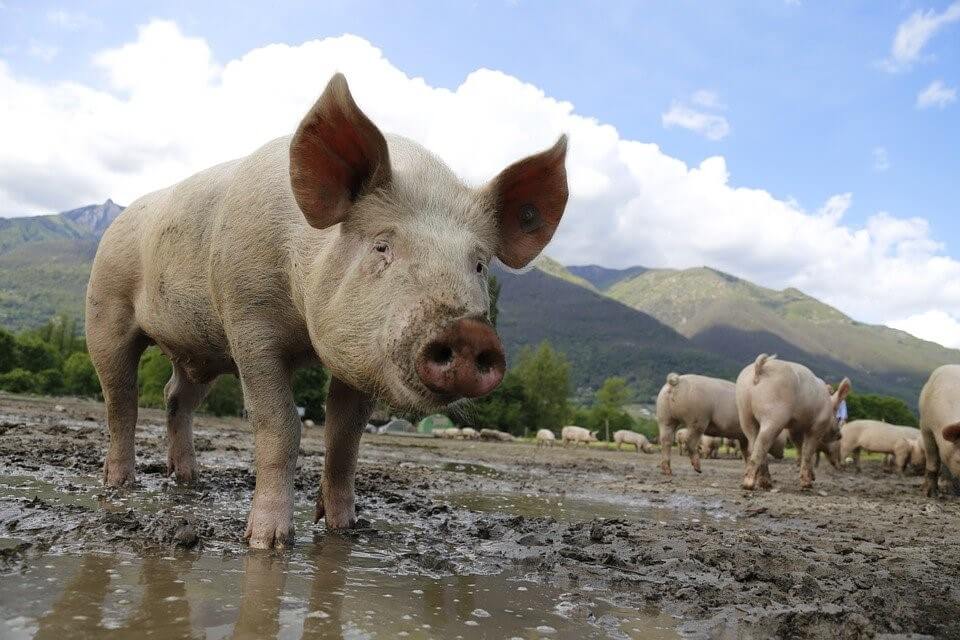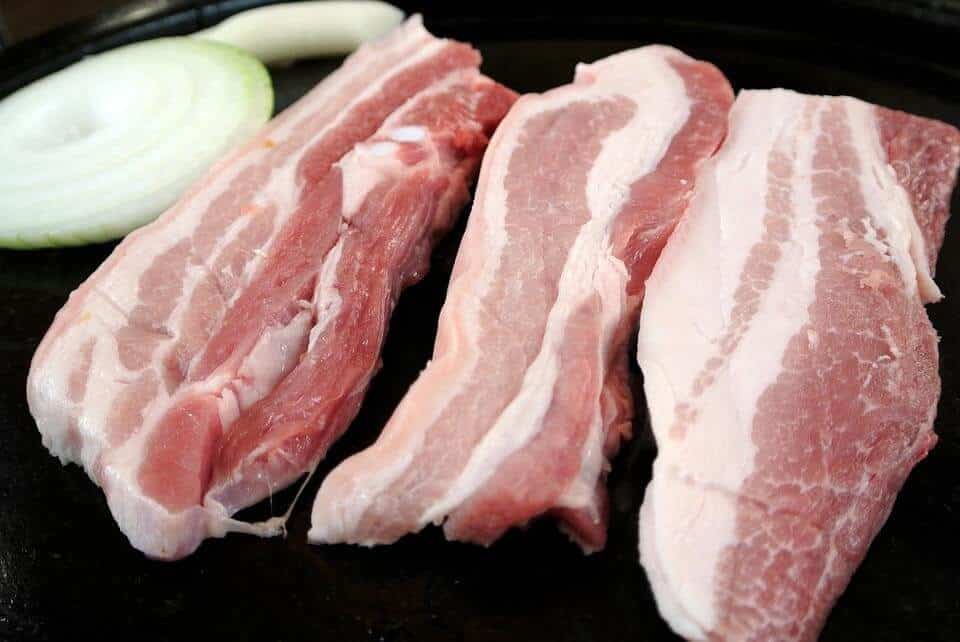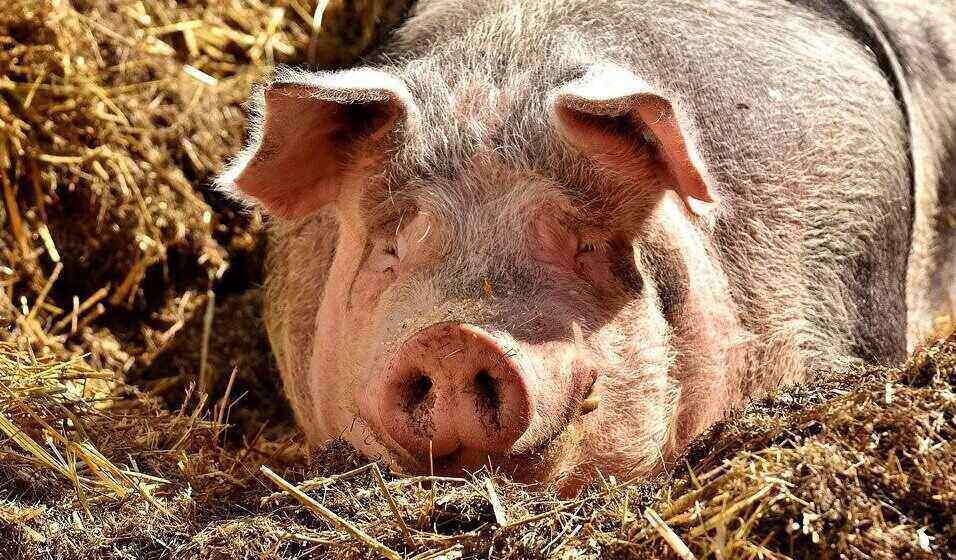Raising feeder pigs is one of the most profitable farming endeavors, provided you manage it correctly. Part of proper management involves acquiring the right kind of knowledge. This calls for answering questions such as what are feeder pigs? How long does it take to raise feeder pigs? And what are the pros and cons of raising feeder pigs?
The global swine industry’s size stood at an impressive $236,112.7 million in 2019 and is projected to grow to an astounding $257,874.5 million by 2027. This kind of upward trajectory can only mean better things for pig farmers across the globe.
Feeder pigs make up a big part of this equation. The best part is that raising them isn’t quite as complicated as it might seem. That being said, let’s take a quick look at what feeder pigs are and what you would need to participate in that projected $257,874.5 million market.
What You Need to Know About Feeder Pigs
The first thing that should be mentioned is that feeder pigs aren’t a specific breed of pig. Feeder pigs are pigs that are being raised with the sole purpose of slaughtering and turning them into pork. This can be any breed of pig, provided it’s being fed and fattened in readiness for slaughter. Though, there are a few breeds that will be more economic to raise.
This feeding period can be anything from 5 – 6 months. However, how soon you wean the pig and raise it to the point of slaughter will depend on the specific breed, the type of feed you give it, and other conditions.
Many farmers prefer to purchase feeder pigs when they are young piglets. In many cases, these piglets will have ideally been weaned and moved on to transitional grower feed. Feeder pigs are typically bought when they weigh around 40 pounds or more and are around eight weeks old.
What Do You Need to Raise Feeder Pigs?
As a farmer looking to raise pigs on your farm, knowing exactly what you need to raise these animals properly is at least half the battle. The other half involves raising them properly. Whether you are an experienced farmer who has raised livestock before or someone just starting out wanting to raise pigs, here’s what to know about raising feeder pigs.
What Are the Best Pig Breeds for Feeder Pigs?
As mentioned, feeder pigs can be any pig breed provided you are raising them for the sole purpose of slaughter. However, since meat production is the main aim here, it’s only logical that some pig breeds are better suited for this purpose than others.
With that in mind, here are some of the most logical pig breeds to be raised as feeder pigs:
- Chester White pigs
- Yorkshire
- Berkshire
- Meishan
- Hereford
- Duroc
- Hampshire pig
- Landrace

These pig breeds are ideal not only because they have a high growth rate and weight gain but also because they offer excellent meat quality. As you would expect, some pig breeds are better at producing certain cuts of meat. Some are specifically bred for their high birth rates and litter sizes.
It’s, therefore, absolutely important to start by deciding what you want to produce. If you are aiming to raise feeder pigs, you might purchase young pigs and raise them to market weight. If this is the case, you will want gilts and barrows. If you plan to farrow to finish – meaning you want to breed your sows then raise their piglets to market weight – you will need sows as well as boars (unless you plan to artificially inseminate). Then, you will raise the gilts and barrows (you will need to castrate the young boars) to market.
Some things to consider if you plan to keep boars on your farm:
- Feeder gilts can start breeding as early as four months, you will want to avoid getting them pregnant if you plan to market them for meat
- The pork from uncastrated male pigs tends to have a slightly off-putting flavor known as boar taint
For these reasons, male pig management (castration or separation) must come into play unless you choose a few sows and a boar for breeding purposes so you can start producing your own feeder pigs instead of buying them.
What to Feed Feeder Pigs
Since feeder pigs are bred specifically for weight gain and slaughter, what you feed them matters and often determines how fast they grow and the quality of meat they produce. Of course, there’s this misconception that pigs can eat almost anything. While this is true to a point when it comes to raising feeder pigs, feeding them just anything can be the difference between making a profit and loosing money.
Managing what your feeder pigs eat will determine how quickly they hit market weight and how much they will fetch. Feed is the largest cost when it comes to raising feeder pigs, so managing feed is very important. As such, you will find that pigs need about 7 pounds of high-quality feed daily. What Do Pigs Eat
Here’s a rough idea of what you need to feed your feeder pigs.
Formulated Pig Pellets or Complete Feed Diet
This should be at the very core of their diet. This is usually a mix of different grains, vitamins, and minerals that can be specially formulated for your pigs. For example, if you are raising pigs outside, your pigs might have different requirements than if you raise them inside. Or if you have poor quality water, the feed can be formulated with that in mind. Working with a nutritionist at an elevator or feed store can be a huge help. You can supplement this with leafy greens, fruits, cheese, milk, bread, and table scraps. The most popular solid foods include grower pellets, grain feeds, oats, and wheat.
No Sweets, Refined Products, or Meat
Giving your pigs refined products, sweets, or meat is not advisable. In fact, in some states, it’s illegal to feed your feeder pigs meat. This is mostly because meat increases the chances of your pigs contracting infections such as ASF, which can spread throughout your herd and even jump to humans.
Lots of Drinking Water
You must ensure that your pigs have access to plenty of clean drinking water at all times. This is especially true if you raise your pigs outdoors because water will help pigs maintain a constant body temperature.
How to Feed Feeder Pigs
Feed management is one of the most important skills to master whenever you raise livestock. This will help you get the animals to the necessary body weight as soon as possible and save you quite a bit of money.
Pigs are single-stomach animals like human beings and, as such, need to be fed more than once every day. Here are some tips on feeding your feeder pigs to ensure the maximum benefits and ROI.
Use Feeder Bins
Feeder bins are an excellent way to limit feed waste. Some of the best feeder bins keep the feed inside but grant the pigs access whenever they feel hungry. To get the most benefit, you must ensure that the pig feeder bin is restocked throughout the day so your pigs have access to feed at all times.
Feed Them Multiple Times
If you aren’t using feeder bins, you must ensure that your feeder pigs are fed at least three times a day. Even though it can be tempting to calculate how much food the pigs need in a day and dump it all in there to get the process over and done with, this is often a bad idea.

Pigs, like humans, can only eat so much in one go. Unfortunately, when they are done eating, they won’t just leave the remaining food alone. They will play with it, creating a mess and a lot of feed waste. Feeding them three times a day limits this wastage and optimizes their feed intake.
When it comes to providing hogs with water, you need to find a solution that will ensure they always have a constant supply of water and keep the water clean. You can either use a nipple watering system or a bucket.
If you are going the bucket route, be sure to put a brick at the bottom of the bucket so that your pigs don’t knock it over and play with the water. Finding a water bucket that will refill on its own will also be helpful.
What Kind of Pig Shelter Do Feeder Pigs Need?
The good news is that feeder pigs can be kept outdoors for most of the year. The bad news is that, even then, they still need some kind of shelter to protect them from the elements or predators.
Another thing to note is that pigs grown outdoors typically grow slower than pigs grown indoors. This is because they use more energy to maintain body temperature and they usually spend more time romping around which will burn more calories. However, many people find pork raised outside to taste better than pork raised in confinement.
To keep your pigs outside, you will need shelter for them, especially in very hot or very cold areas. This doesn’t necessarily have to be a feeder barn; it can just be a three-sided structure. It’s imperative to provide them with a warm and dry shelter. This shelter needs to be kept clean as pigs aren’t fond of sleeping or eating near their manure as opposed to what most people believe. This misconception that pigs are dirty animals often comes from the fact that they love playing with mud, which is something they do for totally different reasons other than being dirty. Here’s an article we wrote explaining why pigs like playing in the mud.
Growing pigs need enough feeder space and the right type of food to ensure the animal’s health and optimal pig growth. Feeder pigs are typically quite easy to manage, provided you have the right information about the kind of feeder type or breed you have chosen.
The tips highlighted here will help you raise healthy pigs and help provide a good return on investment as well as ensure your food safety. At least in terms of good quality pork chops.

